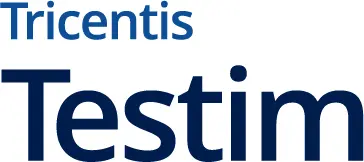Introduction
Salesforce has become a standard CRM for the Enterprise worldwide. It offers a lot of flexibility and customizations to meet the needs of all customers, no matter which line of business they are in. However, this flexibility can also mean more complexity. This can become an issue when moving from one release to the next. Salesforce releases major updates three times a year. These are known as the Spring, Summer, and Winter releases.
These updates introduce hundreds of new defect fixes, features and enhancements. Because of the SaaS model, this means it can be automatically delivered to all Salesforce customers with minimal downtime. For Salesforce, this model means they can provide continuous innovation at a faster rate than traditional on-prem deployments. Companies with a large install base used to lag behind for years, dragging their feet on upgrades. While this solves one problem, it can create new ones for companies that rely on customizations to do business.
Many times, customizations cannot be avoided. Some businesses have unique workflows, processes, and business goals. These modifications can become a risk during an upgrade. What happens when a new feature conflicts with a key customization? This can mean broken test cases, disrupted workflows, and application outages. Those disruptions cost money. The more customizations a company has, the higher the risk of new defects and downtime. This leads to frustrated users, loss of revenue, and costly post deployment fixes.
Managing Salesforce Upgrades
As with any SaaS platform, a company cannot be passive to an upcoming upgrade. Typically, when an update is rolled out, organizations have to scramble and be able to identify and resolve any issues that arise quickly. This reactive approach disrupts the business and adds an additional burden on the technical teams that have to support the updates, usually under tight timelines. It gets worse. The more customized Salesforce is, the harder it is to make sure it is compatible with a new release.
Traditional testing methods fall short trying to address this challenge. Script-based testing requires significant technical expertise, time, and resources that many organizations simply don’t always have. Maintaining these scripts as Salesforce changes can be a labor-intensive process, especially when an update breaks existing test cases.
It becomes a real battle to keep up the pace, and often means going forward with incomplete test coverage, missed defects, and an increased risk of an outage happening during an upgrade.
Low-Code Testing
In more recent years, low-code testing solutions have introduced an alternative solution to meet these challenges. By making the process of creating and executing tests easier, teams can keep up with the speed of change.
Traditional methods rely on deep development knowledge and skill sets, while low-code tools make use of intuitive user interfaces, such as drag-and-drop or record-and-playback features. This helps level the playing field for the testing process, enabling business analysts or product managers to have an active part in the quality assurance process.
Low-code testing tools can provide several key advantages:
- Accessibility: Business users can create and maintain test cases without relying on developers or technical teams as much as in the past.
- Speed: Tests can be created faster in a more user-friendly way. Faster test case creation can allow organizations to keep pace with more frequent updates.
- Reduced Maintenance: When combining AI capabilities to low-code testing tools, tests can be corrected automatically when small application changes occur. This reduces the need for constant script maintenance.
- Coverage: Organizations can increase test coverage by involving more users in the testing process, including business analysts and product managers.
Low-code testing has the ability to increase collaboration across departments. When other user profiles begin to contribute to testing efforts, it helps to align test cases with the operational goals of the business. This approach leads to more comprehensive testing and a better overall outcome.
Early Testing Against Pre-Releases
The goal is to become proactive about Salesforce updates. That means having a strategy to address the challenges head on. This means testing against Salesforce’s pre-release versions as early as possible. Pre-release versions allow organizations to preview upcoming updates before they’re officially rolled out.
By testing customizations against these early versions, businesses can identify compatibility issues ahead of time—long before they have the chance to disrupt operations. This strategy is critical for Salesforce environments because of the platform’s automatic upgrade model.
Tricentis Testim Salesforce helps with this strategy by offering a solution tailored specifically for Salesforce environments. By adding AI-driven capabilities, it helps reduce maintenance efforts. They have addressed this with modules like Salesforce Lightning—a common source of broken test cases that happen during updates.
Challenges to Consider
This does not mean that low-code testing tools don’t also have challenges. Organizations adopting these tools must ensure adequate test coverage for highly customized Salesforce environments, a task that requires careful planning and execution. While low-code platforms are designed for ease of use, there could still be a learning curve for users unfamiliar with automated testing processes. Some level of training will be required.
In general, the more experienced a tester is with traditional testing, the faster they will be with low-code tools. Understanding context is important, and knowing the technical details that happen “under the hood” are still very beneficial.
Another challenge lies in managing dependencies. What about the other systems and applications that Salesforce connects to or integrates with? To ensure compatibility across all integrations requires complete end-to-end testing. This can be time-consuming, even with low-code tools.
Additional Benefits
Thinking longer term, what about how to scale your testing organization faster, even beyond Salesforce? As your overall footprint grows—adding more users, workflows, or third-party apps—low-code testing ensures testing efforts scale without overwhelming your team.
It’s a differentiator for you in the market to compete with. Companies that master Salesforce upgrades can adopt new features faster, delivering a better overall customer experience. While others scramble to catch up, your company can become “customer obsessed” and continue building the applications they want. It means you have to spend less time worrying about competing, and can spend more time innovating.
I should also mention that by leveraging both low-code and AI, it increases the chances of being compliant in situations where there are regulatory requirements. For industries like healthcare or finance, Salesforce upgrades must comply with strict regulations (e.g., HIPAA, GDPR). Failed upgrades could expose vulnerabilities or data risks. In these situations, a broken Salesforce upgrade could mean compliance violations. Increased testing can ensure audit-ready systems.
Taking action
Salesforce upgrades are inevitable—but the disruptions they could cause don’t have to be. Address these challenges effectively by moving to a proactive strategy. Test early against a Salesforce pre-release version by using software that has already been prepared specifically for it. Add a tool like Tricentis Testim Salesforce with low-code automation with AI capability to get to your end state faster than before.
By enabling early detection of compatibility issues and simplifying the creation of test cases through intuitive interfaces, Tricentis Testim Salesforce gets your organization ahead of the Salesforce rapid release cycle. It’s about less downtime, faster outcomes, more collaboration, and better overall test coverage.
Embracing low-code automation is more than just a practical solution—it’s a strategic investment in smoother upgrades and enhanced reliability and resilience. Take control of the Salesforce upgrades process today.
Check out a free 14-day trial of Testim Salesforce today!




